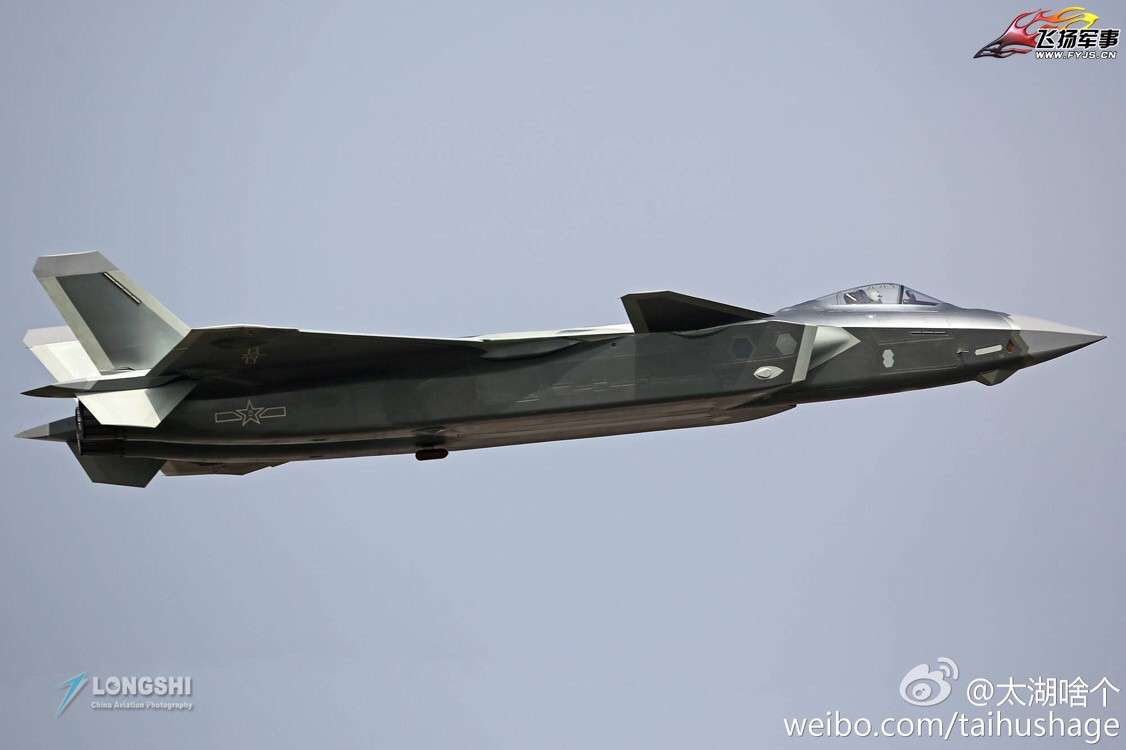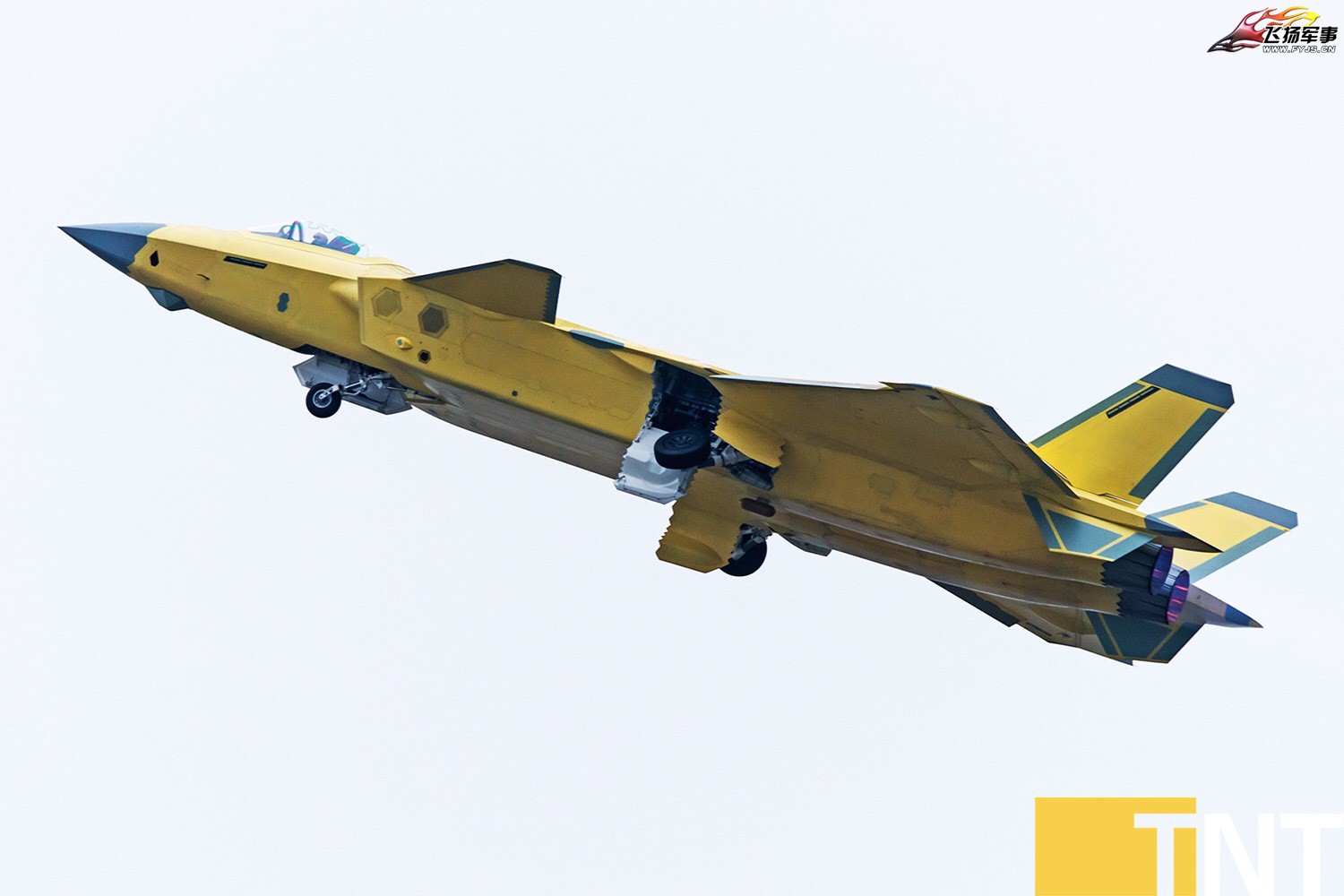It is not a proof. But to make a flexible surface that is adjustable is not beyond anybody's ability. The value of adjustable DSI is to allow optimum airflow to the engine at various speed from low subsonic speed, to transonic speed and supersonic speed.
The engineer must first find out the optimum shape of the DSI Bump at various speeds, and then program the FCS computer to adjust the shape at that speed.
This kind of innovation that is not hard to copy once someone has demonstragted it and proved that it works. I expect more plane will use it in the future. This kind of adjustable DSI saves several hundred kilograms of weight and save the internal space for the machinery to adjust airflow and get rid of the troublesome boundary layer.
DSI is a major innovation invented and patented by Lockeed Martin. It is an example of Think-Outside-of-the-Box invention.
Yeah...What you are talking about as something 'new' from China is actually decades old from the US. It is called the 'spike' on the F-111.
 http://f-111.net/models/inlets/index.htm
http://f-111.net/models/inlets/index.htm
The main purpose of any inlet airflow control mechanism, no matter how complex or simple, is to slow down supersonic air to subsonic
PRIOR to contact with the engine. This is solved.
But the next problem is on how to control this process at as much flight environments as possible.
In order to understand the complexities of inlet air control, especially for the interested laymen, Lockheed produced this document...
http://www.enginehistory.org/Convention/2013/HowInletsWork8-19-13.pdf
The SR-71 is an extreme but that is precisely why we should understand the SR-71's engines.
While the SR-71 is an 'extreme' aircraft, it operates at altitudes borderline suborbital and cruises at speed too high for most materials, it cannot reach those extremes in an instant. In other words, before it cruises at Mach 3+ at 85,000 ft, it must starts from 0 kts/hr at 0 ft altitude and travels gradually thru several atmospheric layers of diverse air density that affects airflow, going from most dense at sea level to least dense at 85,000 ft. Every engineer, even the software kind, knows that the wider the range of the operating environment, the more robust and complex the mechanism must be to compensate for the greater amount of variables. This make the SR-71's engines ideal for understanding how other inlets works.
The relevant section in the above source is section 3.7 on subsonic inlets. Basically, it means you cannot simply slow down supersonic air abruptly. It must be done gradually.
Therefore the inlet must be designed to treat the air very carefully, which means very gentle turns and slow diffusion, to prevent the airflow from separating from the inlet walls and forming eddies and vortices. If this is done properly, the available total pressure will be converted efficiently to static pressure.
To put it another way...
EVERYTHING must be done at subsonic velocities. Therefore, before going to supersonic environment, we must understand how to best create controlling mechanisms for the subsonic regime.
The reason why the F-111, F-14, F-15 and other aircrafts that have complex inlet supersonic air control mechanisms is because we want to have greater control of airflow in the subsonic regime. Less complex mechanism, like the DSI 'bump', means lesser control. Or less fine grained control.
Most people perceive 'sea level' to mean literally sea surface altitude -- 0. But in practice, like how aviation views it, sea level do have a range where air density is relatively uniform enough where aerodynamics and engine performance do not have enough variations to affect flight. That range is from 0 to approximately 1000 ft, or roughly 300 meters.
On the F-111 where the jet's mission is to fly at Mach in that 'sea level' altitude range, where air density is greatest, if supersonic airflow is not slowed down to subsonic speed in a controlled manner, the TF30 engine can literally explode from violent unstarts. Just because you have sea level dense air for aerodynamics and jet engine operations, that does not mean you are safer than in lower density air. This is why some aircraft designs are best at a certain altitude range, while some designs are best at other altitude range.
For the DSI, the moment you want that 'bump' to be variable in any dimension, you deviate from the original philosophy of the DSI, which is about physical simplicity and weight saving.
Understanding basic inlet philosophy and experience is why your claim that the J-20 have a variable DSI system is at best suspect. That does not mean it cannot be done. It was done on the F-111.















